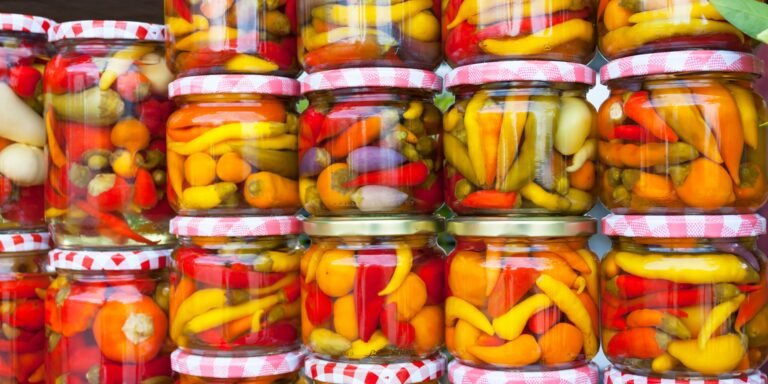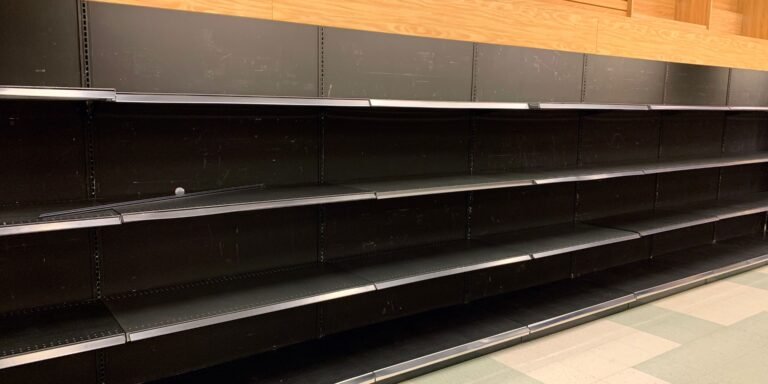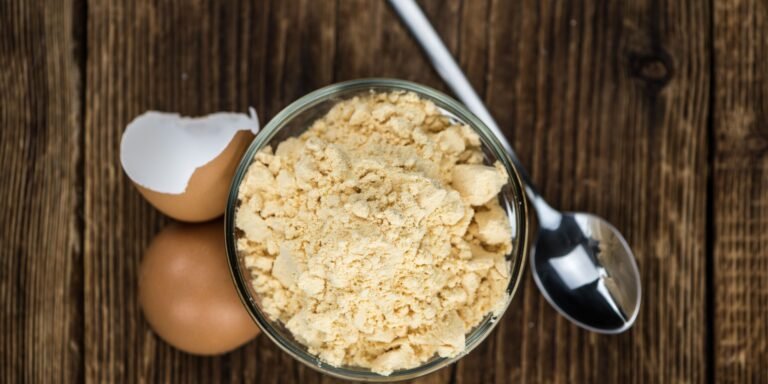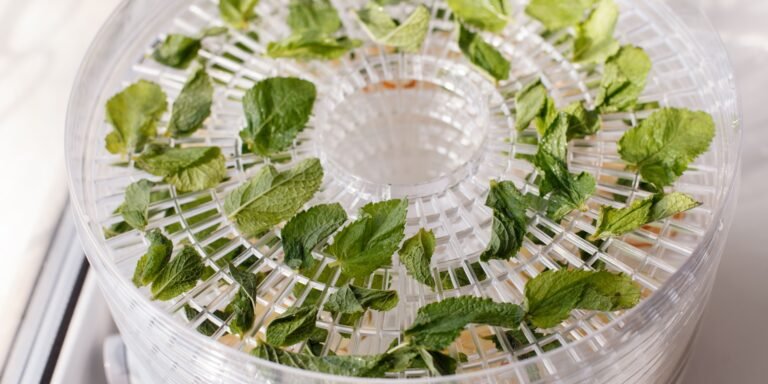How To Store Coffee Long Term So It Stays Fresh
This post may contain affiliate links, full disclosure here.
Given the amount of caffeine we drink on a daily basis, it’s difficult to picture living without coffee. Coffee is a genuinely soothing beverage that soothes most people’s anxieties throughout the day.
I personally prefer tea and don’t think I can live without it, but my husband on the other hand is not a functioning human without his coffee.
Coffee drinkers want to cling to things that make them joyful and help them be in a safe cocoon when an atrocity like an emergency crisis occurs.
You must stockpile your coffee stock in advance to enjoy the taste and comfort of coffee in your shelter.
Here are my best tips on long-term storage of coffee beans so you can enjoy the fresh flavor, even in an apocalypse.
See also: How To Store Quinoa Long-Term
Reasons To Have Coffee Stored For Emergency Events
Bartering
During any emergency event, fresh coffee can be a fantastic barter product. The scarcity of caffeine is the major reason it will work best for the bartering society, and if you have a stock full of fresh coffee beans, people will trade their most valuable property for a few grams of coffee.
Furthermore, 3 out of every 4 coffee users are addicted to caffeine, and with these clear figures, it is clear that employing coffee as a barter item is the best option.
Hydration
Even after years of long term storage, there is no guarantee that the water you drink will remain clean. You will need to use water purification tablets at some point.
The problem with these tablets is that they have a distinct chemical aftertaste that makes individuals not want to drink the water. Adding even stale coffee can improve the taste and help people keep hydrated by making it more pleasant.
See also: Shelf Life Of Wheat Berries
Shelf Life Of Different Coffee
Now that you’ve decided to stockpile coffee for any emergency scenario, you’ll need to know how long different types of coffee last.
Let’s have a look at a few different sorts of coffee that have varied shelf lives; you may choose the type based on the type of emergency you’re preparing for.
Ground coffee
Ground coffee is the least ideal way to preserve coffee for a lengthy period of time. Because it is grounded, it has a larger surface area to expose to the atmosphere, speeding up the oxidation process.
Once you’ve opened the package, you’ll need to use it within a few months. The longer you wait to use the coffee, the more likely it will lose its flavor.
When unopened, ground coffee has a five-month shelf life, and when opened past its best-by date, it has a one-month shelf life.
Whole Roasted Coffee Beans
Ground coffee would undoubtedly survive longer than whole beans. However, because the roasters require a lot of heat to roast the beans, they aren’t very reliable.
The chemical makeup changes of the whole bean coffee, speeding up the process and causing the oil to leak more quickly than it should. It can stay good for up to 24 months after its best date if kept unopened at room temperature.
When the can is opened, the shelf life is substantially reduced.
Green Coffee Beans
Because of their raw state, green coffee beans have the greatest constant oil concentration. Green beans are uncooked beans that can be stored in case of a disaster.
They’re the best kind of coffee beans for the job. Although you would have to go to the inconvenience of roasting the beans, given their extended shelf life, this is a minor disadvantage.
The beans can be kept in perfect condition for up to five years after their best-by date. It will also keep for more than a year after you have opened the package.
Instant coffee
Because instant coffee is prepared by freeze-drying, it has a shelf life of over ten years if it is kept sealed and unopened.
Of course, the shelf life of instant coffee is heavily dependent on its quality and packaging. You may be confident that if the coffee is packed with numerous layers, including aluminum, it will stay fresh in your cupboard for up to 20 years.
Coffee has a major disadvantage in terms of moisture absorption. As a result, if opened in a high-humidity environment, the goods might quickly go bad and lump up.
How To Store Coffee
Freezing your coffee is a simple and reliable way to keep it safe in case of an emergency and I would say it is the best way if you’re planning on long-term storage. Coffee can be stored in the freezer for many years due to its low moisture content.
Before putting your coffee grounds in the freezer, make sure you use non-permeable bags and air-tight containers to keep the air out and prevent freezer burn. If you keep your coffee for a long time, it may collect strong scents like meat or spices.
To avoid this, store the packet in non-permeable plastic bags. Keep your coffee in its original packaging if it’s in a well-sealed container.
When you’re ready to use the bag, make sure it’s at room temperature first. If you use your coffee just after it comes out of the freezer, it will become bad since it will have absorbed all of the moisture.
Air-tight Containers
An airtight food storage container is a step forward to store coffee beans long-term safely, allowing you to maintain the packet in its original state in your pantry. If you’ve already opened your coffee bag, I recommend storing it in an opaque container to assist reduce the gassing and oxidation process.
Because there is still air within the jar, this method will not keep your coffee for years, but if you have opened the bag and want to retain it for as long as possible, keeping it air-tight is your best choice.
Vacuum Sealed
Instead of using airtight containers, vacuum-sealing your coffee can be a terrific option for keeping it fresh and adding another layer of protection. I vacuum seal so much food on a regular basis and it’s such a great way to keep food fresh.
If your favorite coffee beans do not come in solid packaging, vacuum sealing is a great option. If you plan to preserve for a long time, this is a very cost-effective method because you may vacuum bulk-bought beans all at once.
If you have a home vacuum sealing kit, I highly recommend vacuum sealing your coffee for an airtight seal. Because coffee odors can sometimes permeate over time, using green coffee beans is your best bet in these cases. I like to add in a 300cc oxygen absorber to suck out as much air as possible when storing smaller portions of coffee long-term.
Nitrogen-Flushed Coffee Method
Nitrogen-flushed coffee is coffee that has had all of the oxygen removed from the packing. If you purchase an expensive coffee, you will notice that it has been nitrogen flushed.
As soon as the beans are roasted, this process begins. When beans are roasted, they begin to release gas, causing the beans to lose their freshness. Companies use this strategy to combat this, although simply doing so will cause the nitrogen-flushed bags to explode. They deal with this by using a one-way valve to keep the bag stable.
If you want nitrogen-flushed coffee, ensure sure the bag has a valve; only proceed if it does. The main distinction between nitrogen flushed and vacuum-sealed coffee is the freshness factor.
Because you can taste and smell the fresher bean right away, folks who never compromise on coffee quality should aim to stockpile nitrogen flushed coffee.
Oxygen Absorbers
Oxygen absorbers are iron filings in little sachets. To keep the product fresh, the iron in the pack normally snags the oxygen molecules. This oxygen absorber can be placed in your airtight container to absorb all of the existing air.
Oxygen absorbers will extend the life of your coffee significantly. To keep it safe, you won’t need to keep it in the freezer. At room temperature, the small packets would be great.
Mylar Bags with Oxygen Absorbers
Try this storage method using mylar bags with oxygen absorbers if you’re seeking for the perfect way to store your coffee. Finding a good supply of fresh, green coffee beans is the most important stage.
I don’t recommend using any other sort of coffee for this procedure since green beans will keep the coffee fresh for over 20 years. The key factors that degrade the quality of coffee are air, light, and moisture.
I provide an ideal environment for these beans by depriving them of light, water, and air. Fill the mylar bags halfway with beans and a couple of oxygen absorbers. Depending on the size of the pack, I recommend putting one at the top and one at the bottom.
If you’re not sure how many absorbers you’ll need, consult their chart for further information. It’s usually best to be safe than sorry, so add one or two more packets than you think you’ll need. The small sachets would gradually absorb all of the moisture, leaving your beans perfectly fresh.
If you have a lot of mylar bags filled with coffee, use a 5-gallon bucket with a long-term storage lid, such as a gamma lid. Ideally, you’ll put several smaller bags of coffee beans into your bucket rather than a single large bag. Packing your coffee in smaller bags will allow you to take out and use smaller batches of coffee so that the rest of the stored coffee will last longer.
Alternative Approaches To Storing Coffee Long Term
Survival Coffee
You can order a large container of survival coffee if you don’t want to go through the trouble of carrying out all of the aforementioned practices.
This coffee is similar to instant coffee, but it goes through a number of additional chemical procedures before being freeze-dried to prevent spoilage. If time is of the essence, the simplest option for a prepper to include coffee in their prepping list is to purchase survival coffee.
Many people think the taste isn’t as good as deluxe coffee, yet in a pinch, this coffee can feel like gold. Consider packing a box of survival coffee for consumption or barter while you’re at it.
Grow Coffee
On paper, growing your own coffee may appear to be a simple and viable solution, but the full farming process can be intimidating and, let’s not forget, time-consuming.
But with a little perseverance and dedication, you can achieve anything. To grow coffee, you’ll almost certainly need a large plot with enough room for a small farm. If you want to trade the coffee, you’ll need to produce a relatively large amount of it.
Because coffee plants can only grow in specific environments, you must analyze your soil fertility and climate. If it appears inappropriate, you should begin building a greenhouse to aid their growth. You can start thinking about keeping the plan once you’ve built a decent greenhouse.
You can begin producing coffee after fine-tuning. Keep in mind that it could take anywhere from three to five years for your plants to produce fruit. Assume you intend to produce your coffee in the future.
In that scenario, I recommend starting the process as soon as possible so that you can have a functioning coffee garden producing high-quality beans for the freshest coffee in a matter of years.
Purchase green coffee beans
Green coffee beans are the best beans to preserve since they can last for years. Unfortunately, because green beans aren’t as common as roasted beans, finding top-quality green beans might be difficult.
Please place them in mylar bags and top with a few oxygen absorbers once you have them. You can use a hot press to seal the packet because these mylar bags are easy to close.
You’ll have to wait a little longer to eat the beans. To turn these beans into a brown color, roast them on top of a heat plate or in a roaster. After cooling and grinding the coffee, you can enjoy it.
This process may not be simple or quick, but it will provide you with fresher coffee. To keep the green coffee bags safe from rodents, insects, and small animals, I recommend storing them in a large container. This ensures that the coffee is completely safe.
To preserve the green beans, use numerous tiny bags since you can open only one, roast that batch, and use it for a month. The rest of the beans will be safe and fresh for subsequent eating as a result of this treatment.
Roasting Green Coffee During An Emergency
Step 1: Roast the green beans until they “first crack.”
After opening the mylar-packed green beans you preserved a few years ago, the first crack is the first step. Place the beans in a roaster and begin roasting; after a few minutes, you will notice a shift in color as they become more light-yellow.
The beans would start steaming heavily as well. After the water has evaporated, you will hear the first crack; this is the beginning of the roasting process, and it begins at that point.
The sugars begin to caramelize, the water continues to evaporate, and the oils begin to break down the structure. If you prefer lightly roasted coffee, you can stop after a time during the first crack phase. It’s because the beans have the greatest caffeine at this point in the roasting process.
Step 2: Roast the beans until they are “the second crack.”
The beans begin to caramelize even more as you continue to roast them. You’ll see the chaff blown away as soon as you hear the second snap.
Stopping at this point will help you produce a beautiful and deep roast. During the second crack, the sugars burn and the smoke becomes strong. The beans take on an oily appearance as well.
Allow it cool before de-husking the seeds and grinding for a robust cup of coffee. Allow the beans to get a little heat for a while if you want an ultra-dark roast. If you store the beans in little containers, you’ll be able to make a variety of roasts ranging from light to dark.
Additional Coffe Storage Suggestions
- Avoid using a glass jar to store your coffee beans. Even if the pot is airtight, I don’t advocate using transparent glass jars for storage because light can easily get through. Transparent jars might cause the beans to deteriorate and the coffee to become stale.
- Pack in little quantities and store all of these mini packets in one mega-sized tub in your stockpile pantry’s coolest and darkest location. To get to the pack, don’t keep opening the tub. If only one packet has been opened, roast the entire batch and use it.
- If you want to freeze the beans, keep them away from foods that are particularly odorous or spicy. Storing the coffee will keep the beans fresh and eliminate any leftover fish or meat odors.
Bottom Line Long Term Coffee Storage For Your Emergency Stash
I hope our comprehensive coffee guide provides you with plenty of ideas and tips for keeping your coffee fresh and safe for future consumption.
If you aren’t planning on including coffee in your emergency stockpile, I strongly advise you to start gathering it now in order to maintain your morale and use it as a barter commodity.
You wouldn’t drink bad coffee today, and you won’t want to drink it after the apocalypse either. You’ll be a post-apocalyptic coffee expert if you follow the procedures I detailed for storing coffee long term… at least until you run out of beans.







